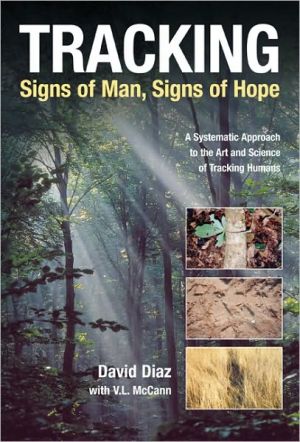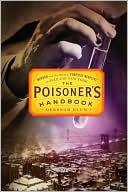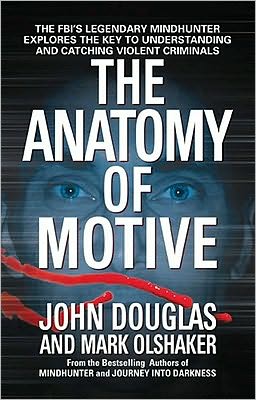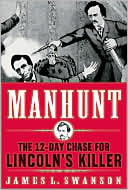Tracking--Signs of Man, Signs of Hope: A Systematic Approach to the Art and Science of Tracking Humans
Tracker. The very word evokes images of buckskin-clad braves crouching over the ground, carefully studying the signs before them-a part of history. But the modern world has not put behind it the need for the earthy business of tracking-far from it. Such skills are still routinely used by the military, rescue personnel, and law enforcement, as well as by hunters and people living at subsistence level throughout the world. Tracking-Signs of Man, Signs of Hope is the ultimate authoritative guide...
Search in google:
Tracking—Signs of Man, Signs of Hope is a complete guide to tracking and finding humans, alive and dead: lost children and adults, crime victims, escaped criminals.
Even a novice tracker should be able to make a reasonable assumption about the age of any sign. And just like anything else, practice will give you the edge you need when it really counts.\ HUMAN & ANIMAL EXCREMENT\ In Chapter 3, we discussed various odors, including that of human and animal urine and defecation. Let's take that a step further and use that excrement to help us determine time passage. Chapter 1 included an excerpt in which a Native American tracker examined horse droppings and determined not only the specific grasslands at which the animal had grazed but how much time had gone by since the droppings had been left. While not an exact science, determining time passage can be accomplished with a few clues.\ Take a close look at the excrement, either urine or defecation. The more moist and fly-congested it is, with a high concentration of smell, the less time has passed since it was left. Conversely, the more dehydrated and least fly-congested it is, with less concentration of smell, the longer it has been since the excretion of the urine or defecation. To obtain a more exact knowledge of this, time it and analyze it in your laboratory (later in this chapter). In cold to freezing conditions, open or cut in half the defecation. The inner moisture and heat will tell you its freshness. Yes, it's a dirty job, but just remember: if it smells like it and looks like it, you surely do not have to taste it!\ LIVING CREATURES & PLANT LIFE\ Here, again, knowledge of the flora (plant life), fauna (wildlife), and insects of your immediate surroundings is paramount to success. In your climate and geographic region of the world, knowing when certain species of animals come out to feed and at what time insects are the most active will certainly provide a clue as to the time a Chase traveled through the area.\ For instance, deer travel to the water to drink during the late evening. If, during the dead of night or the crack of dawn, you notice a fresh deer's hoof print in the middle of your Chase's shoe print, you can pretty surely conclude that the deer arrived after the Chase had been there. If, however, your Chase's shoe print is superimposed on a deer's hoof print, you can almost conclusively determine that the Chase was there after the deer. If the deer of the area normally go to drink at the water source approximately between 8 p.m. and 9 p.m., and your team notices a fresh human footprint over the deer print at 11:30 p.m., the team can pretty safely assume that the Chase is a mere 2.5 to 3.5 hours ahead-or less.\ Another example is a spider which constructs a web during the late evening in order to capture late flying insects (See Figure 5-1). These webs are often strung along narrow trails that are wide enough to capture flying insects yet close enough from one side to the other to make the web construction quick and easy. If the Chase's prints are discovered in the early morning below a newly created spider web, the tracker can assume that the Chase had passed through the area prior to the late evening of the day before.\ Earthworm cast is another clear indicator of recent travel. Now, I am by no means a worm expert. I could dazzle you with Latin Rico Suave names such as Oligochaeta, Lumbricus Terrestris, and Lumbriculida, all part of the worm population known as Segmented Worms. But unless you are a pathologist or biologist, all you need to know is that worms are slimy and soft. Some earthworms are short; some are long; some are skinny; and some are fat. I have yet to see a pretty one.\ A fact well known to many fishermen, worms appear on the surface of the ground after rainfall or at pre-dawn for air. As they travel, they simultaneously leave a mound or trail of moist mud pellets, called "worm cast." In tropical or sub-tropical regions of Southeast Asia, worm cast takes place between one and six o'clock in the morning, climate determining the exact hours it appears. The earthworm is not too fond of the sunlight; therefore, before dawn, they return to their sweet, cool mother earth. A trail of worm cast that has been crushed by a human boot was most likely disturbed after those hours, indicating a more recent passage. (See Figure 5-2a & b) Conversely, footprints covered by a trail or mound of worm cast most likely occurred before 1 a.m. (See Figure 5-3a, b & c). For more information regarding these creatures, ask your local hard-core fisherman. He will be able to tell you most anything you care to know-and some information you would rather not-about earthworms in your neck of the woods.\ In the Pacific Northwest there is a particular species of slimy belly-crawlers known as slugs. They are similar to snails except that they have no shell and are extremely slimy. During the night and pre-dawn hours, they come out to feed on new, tender plants, much to the dismay of area gardeners and florists. Slugs leave a very distinct trail of slimy ooze that dries and hardens with the sun. When disturbed, the appearance of the trail will tell you if it was smeared (while still moist) or broken (once dried). This clue, of course, will give you a good indication of when the Chase traveled through the area.
ForewordxiIntroduction1Chapter 1History and Brief Overview5A Short History6A Tracking Overview9"Prey-Lude" To The Chase13Chapter 2Getting to Know You17Operation Chase22Chapter 3My Common Senses Will Find You27Sight28Visual TrackingScanning and SearchingAuditory Tracking33VocalMechanicalScent Tracking36Tactile Tracking40The Pursuit: Day One42Chapter 4What Happened to My Signs?51Ground Signs52Foot PrintsOther PrintsDisturbancesMiddle Signs54Wind SpeedTop Signs57Measuring58Factors Affecting Signs65Other Humans & AnimalsTerrainClimatic Weather ConditionsTimeThe Pursuit: Day Two78Chapter 5How Long Has It Been Since We Last Met?85Human and Animal Excrement86Living Creatures and Plant Life86Controlled Laboratory Test90Conduct of the ExperimentWhat You Eat is What You LeaveDatabaseA Lesson in Forensic Science102DecompositionMummificationSkeletonizationThe Pursuit: Day Three109Chapter 6What Do We Have Here?117Gathering the Evidence117Preserve the AreaDirection of MovementBlood TrailingSpeed of MovementNumber of PeopleKind of Food ConsumedMiscellaneous Items and EquipmentWeaponsDocumenting the Evidence: The Tracker Report137OverviewSearchingRecordingCollectingFormattingTracker Report147Chapter 7Round Up the Posse163Tracker Team166Duties and ResponsibilitiesTrack Searching ProceduresFormationsImmediate Action DrillsBooby TrapsTraining for the Beginning Tracker193Static and Movement Observation DrillsInitial ExerciseForested Area ExerciseOther SkillsEpilogue203Tracker's Creed205Appendix ATime-Based Analysis Tables207Appendix BTracker Report211Appendix CSituation Report (SITREP)221Appendix DSALUTE Report223Appendix EMedevac Report225Glossary227Recommended Reading233About the Authors235Index237








